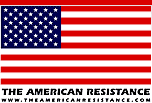The Case Against Continental Deep Integration
Articles
By Bruce Campbell, Center for Trade Policy and Law, Canada, November 4, 2005
Presented at the conference Options for CanadaUS Economic Relations in the 21 st Century sponsored by the Centre for Trade Policy and Law, held at the University of Ottawa, November 4, 2005
Continental integration is a corporate initiative driven by goals of efficiency, competitiveness, market security, and minimal government interference....
Targeted in the first instance at economic and security policies, it requires the harmonization of an everwidening spectrum of policies, regulations, institutions, and structures. Policy uniformity is, in fact, a key measure of political integration (McDougall 2004). In the European Union, political integration is being achieved through supranational institutions and formal agreements, a pooling of sovereignty with the explicit goal of political union. In North America—where governance structures are weak or nonexistent— this is occurring through Canada (and Mexico) aligning to the dominant power. The ultimate goal, though rarely stated explicitly, is economic union with the United States. While no overtly political endgame is ever mentioned, the consequence of this deep integration project, whether intended or not, is a kind of de facto political association or union (though with no political representation).
Use of terms such as interoperability, common, compatibility, and mutual recognition mask the reality that harmonization in most cases means Canada bending its policies and regulations, or simply adopting US policies and regulations. The term integration, as defined by Oxford, implies the creation of a new entity that combines roughly equal elements of the preexisting entities. A process of coming together where one entity is dominant and the resulting combination resembles the dominant entity implies assimilation. What is being referred to here as deep integration are incremental or big measures that in either case are more akin to assimilation.
Two deep integration policy initiatives underway for the last 16 years have rendered this public policy challenge more difficult.
The first, the 1989 Free Trade Agreement (FTA)—later folded into NAFTA— provided the “constitutional” framework for locking in neoliberal policies, and accelerating continental economic integration (Clarkson 2002). NAFTA locked in property and mobility rights for capital, constrained government policy choice, and weakened the bargaining power of workers. It represented a shift (or “structural adjustment” to use the language of the World Bank) to a more marketcentred or “Americanized” statemarket relationship. This characterization of NAFTA is noncontroversial. What is controversial is whether this has been a good or a bad thing.
The second, the postSeptember 11 US military/security agenda, has replaced NAFTA as the dominant driver of North American integration. Beginning with the Smart Border Declaration, securitydriven integration has manifested itself in the restructuring and harmonization of a wide range of Canadian intelligence, surveillance, and antiterrorist policies and practices—information sharing, nofly and terroristwatch lists, security certificates, preventative detention, etc. (Roach 2003). Security integration also extends to military integration, which is proceeding under the guise of interoperability (Byers 2002). These actions have affected related policies such as immigration, visa, and refugees. They are—as we are learning from the Arar Commission—having a major effect on basic civil rights, privacy, and respect for international law (Aiken 2006, Byers 2005). Here again the debate revolves around whether this is good or bad, necessary or unnecessary.
These economic and securityled integration initiatives have narrowed the scope of choices available to policy makers over the last 15 years, and compromised this fundamental tenet of Canadian policy making. I will argue that the deep integration proposals and initiatives now on the table or underway would shrink policy space much further.
There are two fault lines in this debate— two sets of forces and competing visions of the country at play here. At the risk of oversimplification, they are the struggle between neoliberal or market fundamentalist forces, and the social democratic or Keynesian forces. The other fault line is the struggle between the nationalist/multilateralist forces on the one hand, and continentalist/annexationist forces on the other. These fault lines are deep and longstanding. They are overlapping but not identical. (For example, John Turner’s and Mitchell Sharp’s opposition to the FTA was more about their concern about the loss of Canadian independence per se than it was about the constraints it put on a social democratic policies.)...
Finally, the discussion among policy insiders is all about renegotiating NAFTA, about new agreements—big and small—that would move us farther down this deep integration road. But I want us to reconsider what for deep integration zealots is the ultimate heresy:
that it is time, after more than 15 years, to reexamine our future under the FTA/NAFTA. I think we should undertake a comprehensive assessment of its costs and benefits, and take a hardheaded look at the advantages and disadvantages of pulling out of NAFTA. Perhaps it is time to stand back and ask: is NAFTA working for us? Do the benefits outweigh the costs? Is it serving our needs? FTA/NAFTA came into being during the freewheeling ‘80s and ‘90s when market fundamentalism reined and government was considered passé. But that era is passed. This is the 21 st century—the collapse of globalism according to John Ralston Saul. Well, not quite…but the state has found new life and is reasserting itself. So perhaps it is time to ask whether NAFTA is out of date as the overarching framework for managing Canada-US economic relations.
Instead of working ourselves into a frenzy of indignation, accusation, and retaliation for American softwood and other sins, perhaps it is time to consider the mature, dispassionate step of simply notifying our neighbours of our intention to withdraw from NAFTA. As Mulroney said during the free trade debate, legally this is a simple matter....
Read the complete article.
In order to use copyrighted material from this site for purposes of your own that go beyond 'fair use', you must obtain permission from the copyright owner.

